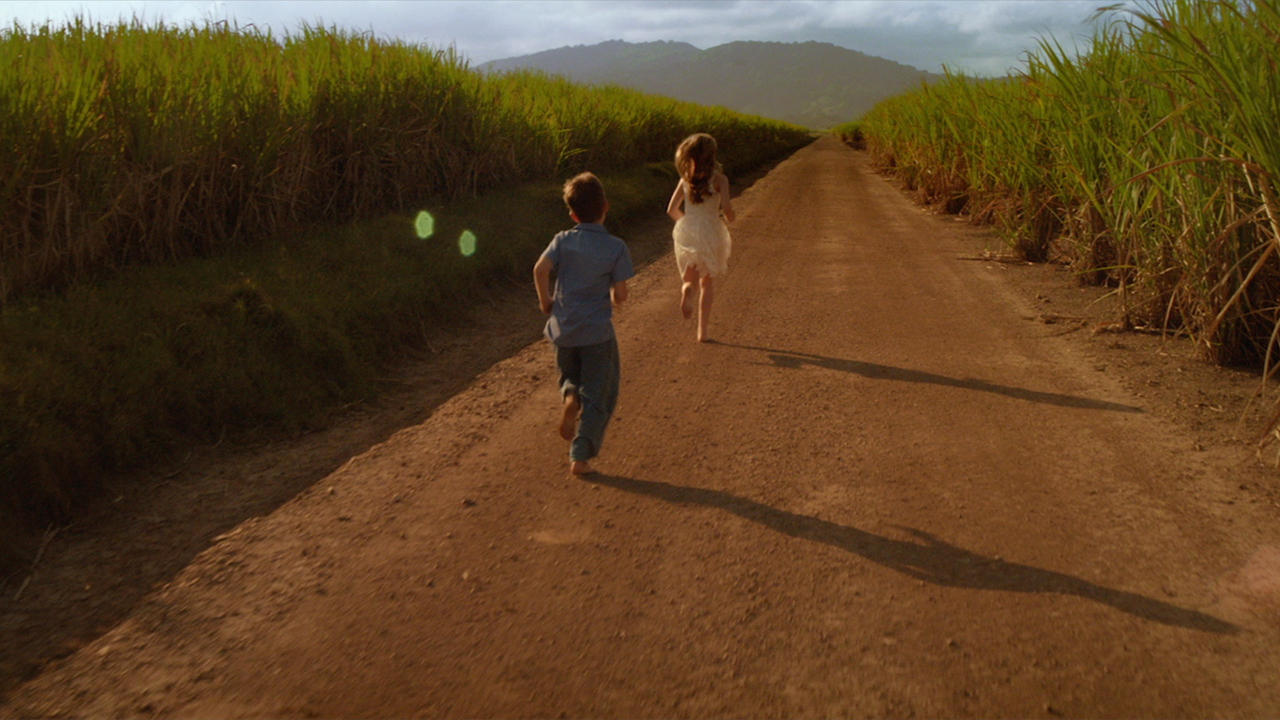One of the winners of the Young Director Award at this year’s Cannes Lions, Writer/Director Matthew Thorne’s Where Do Lilacs Come From is a sterling exploration of family, memory, and loss, an ethereal mash-up of The Tree of Life, Amour, and Eternal Sunshine of the Spotless Mind.
In a large, empty house in the Australian suburbs, Michael comes to check on his elderly father (“Chris”, played by Joe Feeney) and finds the old man sitting in a drawing room, lost in thought. “How you feeling today, Dad?” Michael asks. There’s a slight pause, then Chris smiles and says absently, “It’s a beautiful garden, isn’t it? A perfect day to be gardening.” Then, in the first of numerous creative transitions, we match-cut from a medium shot of Old Chris in the drawing room to Young Chris, playing hide-and-seek on a deserted dirt road with a gang of childhood friends. As Chris’ mind deteriorates, we weave back and forth between past and present, between the real and the surreal, witnessing Chris’ best and worst days.
Writers are often told: “Write what you know”. For Where Do Lilacs Come From, Thorne did just that, ripping a band-aid off painful true-life events and dramatizing them for the screen. “I had a lot of memories from when I was younger of my dad losing his mother to Alzheimer’s,” Thorne said. “[Those memories] really became the genesis for the film — particularly the pain my dad went through. It was a very strange experience being reintroduced to your Grandmother every day as though she had never met you…You almost start to wonder whether that’s normal. I really wanted to tell a story from her perspective — what it might be like to live in a world where present and past don’t have a clear delineation.” On that front, Thorne excels magnificently, tapping into the dreamlike-quality of memory loss with precision. The extent of Chris’ Alzheimer’s is not apparent until Michael holds up a framed photograph and shows it to his father.
“That’s Mom,” Michael says. “Wasn’t she beautiful?”
“She’s probably in the house,” Chris says.“No. Mom’s gone now.”
“Oh,” Chris says, pointing to a man in the picture. “Does he know?”Michael takes a deep breath, trying to keep his composure. “That’s you, Dad.”
Thorne and a “trim crew” shot for seven days on location in Queensland, Australia. The gorgeous, sweeping cinematography (lensed by Tennyson Tostee) was captured on an Arri Alexa, with the help of some truly special Crystal Express Anamorphic lenses (rehoused Cooke S3s with added anamorphic elements). “We wanted to make sure that we had flexibility in the way we shot,” Thorne recounted. “Camera was really only the department that had more than a single person in it. In the end, I believe the cast outnumbered the crew; it was a really interesting way to work.”
Let’s be frank: the direction and visuals are the true show-stoppers here. Chris’ memories flutter in and out like fireflies. As the camera swirls and glides and drifts (in true Malick fashion), dirt roads morph into hospital corridors, the constantly-changing scenery redolent of the untrustworthiness associated with human memory. Characters change mid-scene, older simulacra being replaced by younger ones, and vice versa. In one particular standout scene, Chris find his younger self in the kitchen; the boy runs off, and Chris gives chase — the camera close behind, snaking through the hallways like a phantom. Chris follows the boy into the bathroom, where he finds his younger self soaking in the tub. He watches with curiosity, then we whip-pan to the right and see that Chris is now in the bathtub, being washed by his son. “I think the biggest challenge with this project was getting the family right over several generations,” Thorne said. “We ended up with twelve very talented actors playing these people over several periods of their lives, and getting these ages to mix together as a unified film that didn’t feel disjointed was a real undertaking. Not just in terms of casting, but everything. We wanted there to be a sense of immediacy to all the memories; we were never interested in creating a period piece.”
Under ULT Film, Thorne and his producer, Danielle Pearce are busy tackling all sorts of projects, as well as crafting ideas for another short film. Stay in touch with them via their official website or Facebook page.

 Ben Watts
Ben Watts